|
Dogs, cats and other animals get adopted from animal shelters and rescue groups every day, 365 days a year. Placing animals in new homes is a process that never stops and a process which requires a lot of work by the shelters and rescue groups placing the animals and by the people who adopt them. I'm not aware of statistics kept which relate to the percentage of placements which don't work. It is an unfortunate reality of the animal welfare process that not all adoptions work out for one reason or another. Perhaps problems develop between the new pet and existing pets in the home. Perhaps the new pet has behavior challenges the adopter did not anticipate and which cannot be overcome. Perhaps someone in the home is allergic to pet dander and that allergy cannot be reasonably treated. Perhaps some personal issue develops with the family which leaves them physically or financially unable to care for the new animal. I try not to judge because I presume that people mean the best when they adopt an animal. Some people should never have pets at all, but I feel that way about only a small minority of the public. We once adopted a dog from a local rescue through a foster to adopt program; she and my husband did not bond and in the end, she was simply too big for us. It pained us both, but we returned her to the rescue and she was adopted by another family. I learned recently about a dog which had been adopted from a local shelter and which the family was trying to re-home. It wasn't clear to me at first how long the family had had the dog; the shelter said the family had had “Hannah” for years. The family said she had been adopted in June. Regardless of timing, a man had adopted Hannah and problems developed between her and another dog in the home. The man's daughter was trying to re-home the dog, having been told that if the dog was returned to the shelter, she would be destroyed. I did not know the family, but I tried to help. I began reaching out to rescue groups to find one to take the dog. The daughter said that she was considering keeping Hannah to try to work with her toward re-homing her; she has children and two small dogs of her own and said that Hannah would have to stay outside in a pen while she worked with her. I told her I would find her a pen and a dog house if that mattered. She said she would check with her husband. She later told me that she had decided to not keep Hannah because she was worried about liability issues. I had not heard from my rescue contacts, so I called the shelter to check out the story. The shelter was full of animals due to a law enforcement seizure and yes, if Hannah was returned to the shelter and reported as being aggressive, she would be destroyed. While I was still hoping to hear from a rescue contact, I received a follow-up message that Hannah had been destroyed. The message said that while the adopter was sleeping, Hannah “got into the house” and attacked the other dog; the adopter woke up to the dogs fighting on top of him. I tried not to focus on the words. No dog just “gets into a house” without a means to do so. Why was she outside? How was she contained? So many questions. I don't presume to know that happened between the time Hannah was adopted and when she was destroyed on September 18, 2018. I cannot help but to feel that she was failed by process because she is dead. Did the family get adoption counseling about bringing a new dog into a home with an existing dog? Did they know anything about how to introduce the two dogs to each other? Does the shelter usually have a mechanism by which it can take back animals when an adoption doesn't work out? Are adopters referred to resources for training and to resources to help resolve behavioral issues? If you run a shelter or a rescue group, I say these things to you.
If you are considering adopting a new to you pet, I say these things to you.
(Hannah was not the actual name of this dog. I changed her name for the purposes of this blog. Hannah is derived from a Hebrew name which means gracious, full of grace and mercy.)
0 Comments
As a proponent of the No Kill Equation as a way to save shelter pets, not a week goes by when I don't have a conversation with someone about foster programs and how vital they are to keeping companion animals alive. Even the best of shelters can be a stressful environment for any animal. Many animals are very emphathic. Most can see, smell and hear things we do not. This means that for them, a shelter can be a very strange and scary place and is nothing like the home they may have known. Even the most balanced of animals will not behave in a shelter the way he or she behaves outside of a shelter. This makes it very difficult to identify behavioral issues and to even determine which animals are social and well-adjusted. Most rescue groups do not have a physical shelter facility and are completely foster-home based meaning that all of the animals are housed in foster homes. In the case of rescue groups which do have a physical building, the same focus on getting animals out into foster homes still applies. Even the best animal rescue facility can be a stressful environment for animals who may be confused, scared or otherwise traumatized because they are displaced from home. I have always considered the fostering of animals to be a Higher Calling. It takes a particular type of person to bring an animal into their home, knowing that the arrangement is temporary. Most of us who consider ourselves “animal lovers” bond with animals quickly and the realization that foster animals are in our homes not to stay, but to be prepared to be a beloved pet for someone else can be really hard for some people. For me, I think it's all a matter of attitude in realizing that the arrangement is temporary for the foster home, but will be life-changing for the animal being fostered. The good far outweighs the sad when an animal goes on to his or her Happy Beginning. What exactly is fostering all about? Animals in foster care are animals who are being prepared for a new life. Some are perfectly healthy. Some may have some special needs. The past of animals in foster homes may never be known, but their present becomes very much known. Can he walk on a leash? Is she house trained? Does riding in a car upset her? Does he love to play with toys? How about getting along with children or other pets? All of these questions can be answered more accurately once animals are outside of a shelter environment and in a home. While we are learning about the foster animals, they are also learning from us and from our own animals. They learn to be house trained or use a litter box, they learn about structure and they learn to trust. As Marti Colwell of Bichon FurKids, Inc. told me recently about her organization, the “mission of foster homes is to provide a loving environment where dogs can learn to trust, know that they are safe and can grow to become the happy, confident, loving canine companions they were born to be.” Yes. Fostering pets can be a wonderful opportunity for people who love animals, but who are not prepared for the long-term commitment of a pet or who travel frequently and for whom having a pet would be difficult. It can also be a good option for someone who is grieving the loss of a beloved pet and is not sure if they are ready to adopt again; it can help that person heal.. Some shelters and rescue groups have foster programs in which animals are fostered for a finite amount of time and some prefer that animals remain in one foster home until they are placed. The shelter or rescue group should provide food and cover the costs of all veterinary care of specialty training. An effective foster home extends the walls of the shelter or rescue group out into the community, increasing the life-saving capacity of the organization. Additionally, each foster home becomes a working part of a marketing machine. Every time a foster home talks to people about their foster pets, they are helping to promote the life-saving work of the organization. My brother and sister-in-law have fostered more than 100 dogs over a period of 8 years, a fact which both amazes me and makes me incredibly proud. We will surely never know the full effect of fostering so many dogs not only on the dogs themselves, but on the lives of the families which are forever changed by the dogs they adopt. When I was working on a project recently to highlight their fostering, both of them told me that fostering dogs is how they want to be remembered. It is a Higher Calling indeed. (image of foster dog, Benjamin, courtesy of Lori Anne Truman and Doug Eisberg)
In August of last year, we began talking about getting another dog. We had said farewell to Aspy very unexpectedly and traumatically on the 4th of July of 2016 and we just had not been ready for another dog. We needed time to heal and time to separate ourselves from the onslaught of memories of the last 36 hours of Aspy's life. But we were ready. We started the search on Petfinder and considered getting another American Eskimo Dog since we thought that was probably the breed Aspy had been. We weren’t able to find any close to us and considered making a trek to another state to adopt. We thought about adopting a senior and talked about whether or not I was strong enough emotionally to handle having a dog for a short period of time. We were also looking at local dogs and ultimately decided to meet some of them before making plans to travel to meet a dog in another state with whom we may or may not have a bond. We met three dogs on a Saturday and did not feel a connection to any of them. They were all worthy of being saved, but we just didn’t feel like any were a good fit. The first was at a nonprofit no kill shelter. He was just too big, so much so that I had trouble controlling him on a leash. He was a beautiful dog and we knew he would be okay. The second was at a veterinary office which provides services for a local city. He was very young and too high energy for us. He was incredibly cute and we knew he would be adopted. The third was at what is called a dog shelter, although I have many other words to describe it. She was so traumatized from having been housed with hundreds of other dogs for years that we really could not interact with her. We felt guilty leaving her there, but we knew she would be kept alive and in the end we did not want to make a decision out of guilt. Our Saturday trip was a bust and it was upsetting. I had told myself I would be fine with any dog and I guess I was expecting magic that did not happen. I know intellectually that there are hundreds of thousands of dogs who would make a great addition to our family. I know emotionally that feeling a bond and a connection with a dog with whom we will share about 15 years of our lives matters. 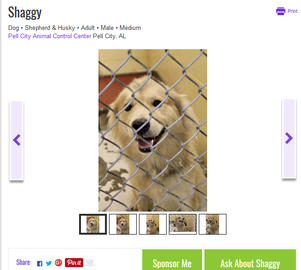 We did what any rational people would do. We spent time back on Petfinder, looking for other dogs in our area. Rich was on his computer. I was on my phone. I must have handed my phone to him dozens of times to show him a listing while asking, “how about this one?” There were just so many that it was overwhelming, sad and encouraging at the same time. Surely there was a dog out there who would be a good fit for our home and our lifestyle. When I first saw “Shaggy’s” face, my heart skipped a beat. Or at least it felt that way. He was a young adult. He looked sweet. He had a little mohawk and while he was in what I consider a kill shelter and I worried about his care, he looked really happy. He was listed as a German Shepherd/Husky mix, he was thought to be two years old and the listing said he was "a little rough around the edges." His listing also said he had been found running loose with a chain around his neck which was so tight it had to be cut off. That touched a chord with me, considering that our dog, Snake, had lived chained to a tree for the first two years of her life before Rich adopted her. We agreed he was a possibility and Rich made plans to meet him on Monday when the Pell City Animal Shelter opened, along with another dog named King who was surrendered because his owner had cancer. Rich made the trip on Monday and told me he liked both dogs, but that I should meet them. (I am sure looking back that the bond had been forged and it was just a matter of me meeting our dog new dog). I made plans to take some time off work the next day to make the trip. I was anxious about it. I knew the Pell City shelter had a good reputation, but I also knew they destroy animals for space. Would I be able to stay calm? Would I be able to look past the faces of the other dogs in the shelter and focus on being there to adopt just one dog? We met both dogs. King was sweet and was fully vetted and ready to go. He really would need very little work and would just need to decompress in a new home. Shaggy was a mess. I think I knew from the time I met him that he was the one. He was sweet and goofy, he had no real idea how to walk on a leash and he was a jumper. King or Shaggy. King or Shaggy. We talked about it and decided that Shaggy was the one because we felt a bond with him and because he needed us more. We knew he had some behaviors typical for chained dogs that some people may not know how to handle and he was also heart worm positive. We left with him that day and made the drive home in a thunderstorm. We began working with "Rusty" from the moment Rich put him in our truck for the trip home. When I say "we," I really mean that Rich did the work and I tried to help. Rusty is house trained and crate trained. He has learned not to lick us for the most part and when he does, I joke that it is "incidental contact" and that "after further review, the ruling on the field stands." He jumps less than he used to but still jumps and twists in the air when he's playing outside and is wound up; he jumps so high he could probably do well as an agility dog. He no longer uses rocks, leaves and pine cones as toys since he has dog toys, although we did learn the hard way that hard rubber toys are the only kind he cannot destroy in less than 5 seconds. He could do quality control work for toy manufacturers before they describe a dog toy as "indestructible." He is full of energy and loves, loves, loves to play. Rich taught him to catch a Frisbee and he has a host of toys he plays with on his own by tossing them in the air and then going to chase them down. Although the shelter thought he was two years old, we believe now that he was much younger and was probably a year old when we adopted him. Rusty is actually not playing at all now since we are still doing his heart worm treatment. I still marvel at the fact that so many people in our region do not give their dogs heart worm prevention. It costs about $6 a month and using it can avoid putting dogs through an incredible ordeal to try to rid their bodies of heart worms. Rusty was given a heart worm preventive for period of months before prescriptions for an antibiotic and steroids. His first heart worm shot was in August; the second and third were over a week ago. Based on instructions from our veterinarian, Rich calculated that Rusty can play again on October 21st so it will be a day of celebration for us. He won't be retested by our veterinarian to confirm the worms are gone until May of next year. Rusty may not have been perfect for everyone, but he was perfect for us. We still think about Aspy's last two days, but less than we used to. I still know intellectually that there are hundreds of thousands of dogs out there who could have made a wonderful addition our family. But I believe that some things are meant to be and I believe the same about us finding Rusty. Thank goodness for Petfinder. Happy Gotcha Day, Rusty. We'll be able to play soon. Note: the dogs we looked at before Rusty have been adopted with the exception of the dog at the "dog shelter." I have yet to come up with a positive way to influence that location and continue to work with my contacts to try to have the dog pulled by a rescue group to be properly decompressed and rehabilitated.
|
AuthorI am an animal welfare advocate. My goal is to help people understand some basic issues related to companion animals in America. Awareness leads to education leads to action leads to change. Archives
July 2024
Categories
All
image courtesy of Terrah Johnson
|
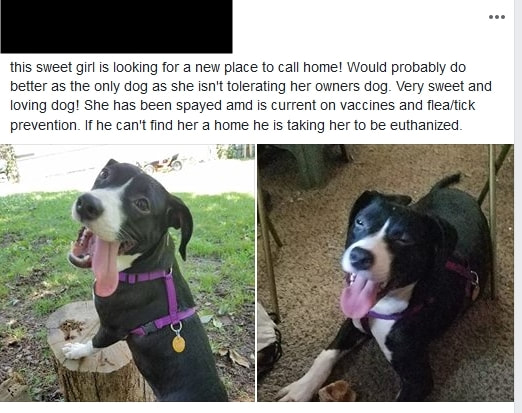
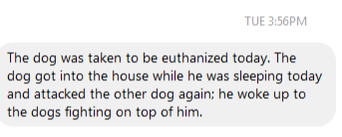
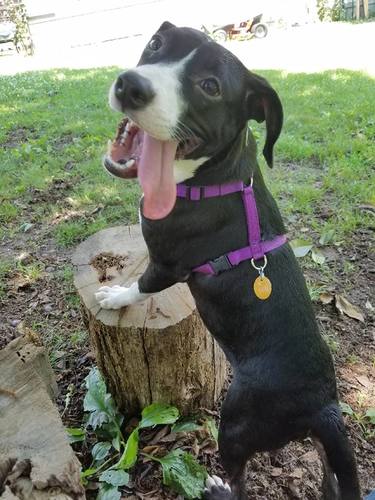
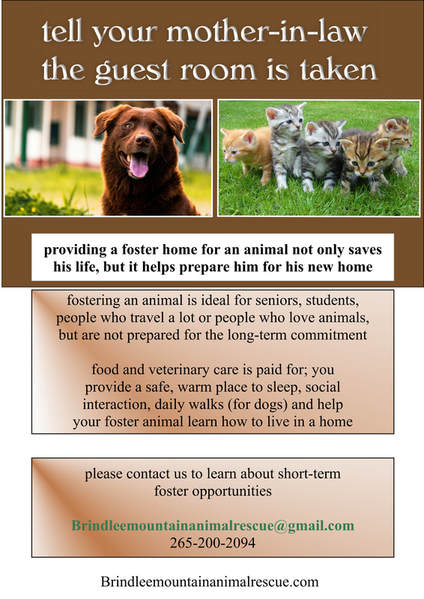
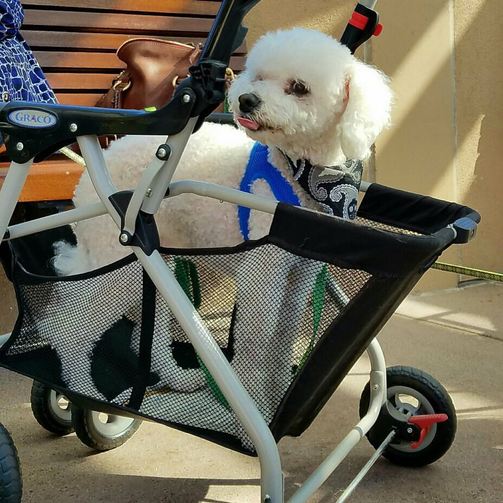
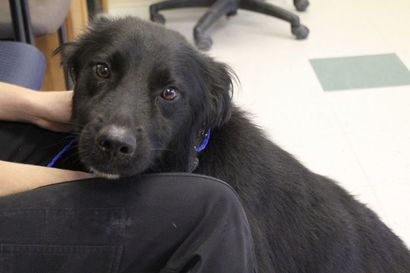
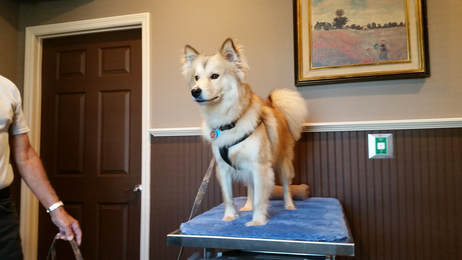
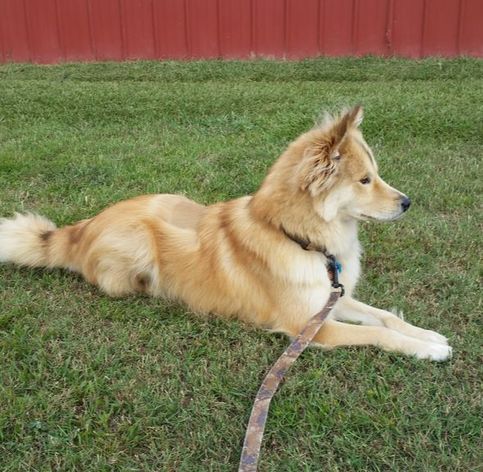
 RSS Feed
RSS Feed